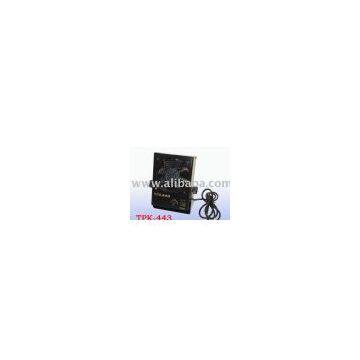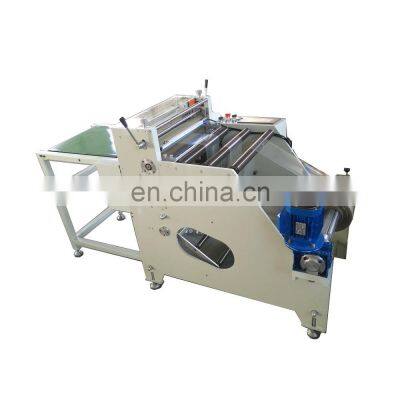Static Eliminator Insights & Buyer's Guide
Static eliminators are an essential part of those industries where static charges can cause major problems. These devices are supposed to neutralize static charges so that they do not damage sensitive electronic components or pose a danger in their operating environment. A well-controlled static environment will increase operational efficiency, which will be beneficial for product quality. A working knowledge of the various types of static eliminators and their applications is imperative for any firm willing to use static control.
What is a Static Eliminator?
Definition and Functionality
A static eliminator is a device that is designed specifically to keep static electricity out by removing unwanted static charges from a surface or in the air. This is accomplished through the process of ionizing, wherein ions are released to neutralize the electrical charges on the surface, thereby reducing static buildup. Static eliminators exist in a variety of forms, each serving different purposes:
Ionizing bars
Blowers
Handheld devices
These devices are required in industries where inflicting static cling or static discharge could lead to inefficiency in operations, product damage, or even hazards. For safe production standards, companies rely heavily on static eliminators for dependable static control.
The Importance of Static Control in Industries
Static control holds paramount importance in a host of industries, such as electronics, plastics, textiles, and packaging. In these, static electricity may cause several simultaneous negative occurrences, including faults in equipment, defects in products, and dangerous static discharges. Static elimination shall prevent static-induced clicks by neutralizing the very charges that could disrupt sensitive equipment and materials. Here are some instances of implementing static control across varied industries:
A static control system in the electronics industry must protect sensitive components from static discharge.
In the plastics industry, static eliminators control static cling and improve product quality.
With all those static control mechanisms proven effective, they ensure a smoother operation, cut waste, and promote safety.
Types of Static Eliminators
Active Static Eliminators
Active static eliminators are very efficient machines; they succeed in neutralizing static electricity by way of ion generation and bombardment thereof on charged surfaces. These include the ionizing bars and ionizing blowers, which are involved in cases where a major static buildup is present. For example, the ionizing bar emits ions in a steady, continuous flow that helps to neutralize static charges on surfaces or objects that are prone to static pose. Unlike ionizing bars-ionizing blowers require high velocity air and deliver ions over a wide area, making it suitable for applications where large-scale static control is needed. Through the use of active static eliminators, any business can reliably eliminate static charges that may cause a static discharge and create more efficiency in operations in other diverse industrial fields.
Passive Static Eliminators
Passive static eliminators present a relatively simple approach to static control and depend on material properties or design features that reduce static electricity. These devices, given examples, prevent such a problem in relatively less causative environments. Passive static eliminators do not require external power or ionization processes to eliminate static electricity; rather, they dissipate static charge through conductive or semi-conductive materials, thus preventing buildup from occurring. A passive method of static control is often applied where there would be little point in an active one, and in cases where a cheaper method of static elimination is preferred. Such devices serve to maintain static-free environments, which guarantee safety and product integrity.
Comparison between Ionizing Bars and Handheld Devices
Ionizing bars versus handheld devices are two opposing options for static elimination, with each system encompassing suitable advantages in certain areas. Ionizing bars are generally fixed; hence, they are best fitted for static control on larger areas continuously, such as production lines or conveyor belts. Ionizing bars are a form of static neutralization that never cease and keep uninterrupted operations from giving rise to the problems that the static could have resulted in. Contrarily, handheld devices are portable and hence allow the user to carry out static elimination on desired locations or objects that require urgent treatment. Such devices come to the aid where static problems are confined to certain locations or where a mobile solution is in demand. Knowing well the very operation to be put under static control will guide the company in choosing between ionizing bars or handheld devices for the static control system.
Benefits of Using Static Eliminators
Efficient Static Elimination
Static eliminators are industrial tools through which the issue of static electricity gains proper attention. The devices are designed so that they neutralize static charge either very fast or very efficiently, thereby offering total control over static buildup. Since the static eliminators generate ions and release them into the environment through ionizers such as ionizing bars and blowers, the ions neutralize the static electric charges, addressing the static problems before they develop. This ensures against static discharge, which could have otherwise damaged sensitive equipment or materials. By using static eliminators, companies can properly neutralize static, thereby maintaining smooth operations and cutting down on downtime caused by static-related interruptions.
Reduces Production Static Cling
In production environments, static cling can hamper production efficiency and product quality. Static eliminators are used practically to lessen static cling to one of the paramount daunting problems manufacturers confront. By eliminating static charges on surfaces and in materials, the static eliminators prevent the adhesion of dust and other contaminants, which would otherwise betray product integrity. The use of anti-static bars and micro static eliminators is most effective in places where static cling thrives, such as in plastic processing. By providing reliable static control in the manufacturing operation, these devices help deliver higher output quality and, hence, more satisfied customers.
Better Product Quality and Safety
Static control and elimination improve product quality and enhance safety in many industries. Preventing a static discharge inflicts malfunctions and defects on equipment and products because it is caused by an increase in static electricity; therefore, static eliminators neutralize static electricity. In the industry where delicate components are involved, for example, electronics, static eliminators are very effective at preventing damage caused by static. In return for minimizing problems presented by static electricity, static eliminators also provide a safer environment for workers by protecting them from dangers caused by static discharge. Ideally, the entire spectrum of static control solutions, including active and passive static eliminators, will allow a company to produce quality products while maintaining high safety standards.
Applications of Static Eliminators in Industry
Electronics and Semiconductor Manufacturing
Static eliminators hold a very important role from the point of product integrity and operational efficiency within the industries of electronics and semiconductor manufacturing. Static electricity very much endangers these sensitive components, as even a little static discharge can totally destroy them. To guard against such hazards, static eliminators are widely used to cancel static charges and also to prevent static buildup on surfaces and in cleanrooms. Ionizing-type bars and blowers are used to give a continuous output of static neutralization in protecting delicate semiconductor wafers and circuit boards. The effectiveness of static control systems gives manufacturers credibility in production while diverting their attention from the expensive defects caused by static electricity.
Textile and Packaging Industries
Static cling and static discharge issues, whose presence often puts in best impediments into production processes in both the textile and packaging industries, can even affect product quality. Static eliminators are therefore important in cases where static electricity leads to materials actually sticking. They also result in dust attraction. Anti-static bars and micro static eliminators work well to reduce static cling on fabrics and on packaging materials. In neutralizing these charges, these devices also keep machinery running smoothly and make for better quality in the finished product. On packaging lines, static control systems are employed to minimize the build-up of static electricity to attenuate hazards of static discharge during handling and transport of packaged articles, thereby safeguarding their quality.
Automotive and Aerospace Applications
Static eliminators are needed to preserve high safety and quality levels in the automotive and aerospace industries. Static electricity can interfere with the assembly of electronic components as well as pose safety concerns in the manufacture and maintenance of vehicles and aircraft. Solutions to control static charge are used to discharge and prevent the buildup of static charge, including active static eliminators such as ionizing bars and passive systems. These are necessary to lessen the danger of static discharge from component failure and safety destruction incidents. Integration of proven static neutralization technologies allows the manufacturers in these industries to ensure product endurance and reliability, and also comply with strict safety regulations.
Frequently Asked Questions (FAQs)
What is a static eliminator, and how does it eliminate static electricity?
A static eliminator is a device designed to neutralize static electricity on surfaces, preventing static cling and other static-related issues. These devices can be ionizers, static bars, or even blower systems that generate positive and negative ions to neutralize static charges. By using an efficient static elimination process, they help eliminate static electricity, especially in industrial settings where high static levels can disrupt operations. Many static eliminator manufacturers produce a range of solutions tailored to various applications, ensuring effective static control. The choice between active and passive static eliminators often depends on the specific environment and the level of static electricity present.
How do ionizers work in static control?
Ionizers are devices that neutralize static charges by emitting ions into the air. These ions attach to the static charge on surfaces, effectively neutralizing it. An efficient and versatile static eliminator, ionizers can be used in various settings, from electronics manufacturing to packaging. Unlike static bars, which require direct contact with surfaces, ionizers can work at a distance, making them suitable for larger areas or delicate items where direct contact could cause damage. Many industrial applications benefit from using ionizers, particularly in environments where controlling static electricity is critical for safety and functionality.
What are the differences between active and passive static eliminators?
Active static eliminators, such as ionizers, require a power source to generate ions and neutralize static electricity. They are typically more effective in rapidly removing static charges. On the other hand, passive static eliminators, like anti-static bars, rely on materials that naturally dissipate static without needing electrical power. Each type has its advantages, with active systems often preferred in high static environments due to their faster static elimination speed. However, passive options are beneficial for areas where power supply is an issue or where a simpler solution is sufficient for preventing static electricity problems.
How can I prevent static electricity in industrial settings?
Preventing static electricity in industrial settings involves a combination of strategies, including the use of static eliminators, grounding techniques, and material choices. Implementing an efficient static control system, such as using anti-static mats or clothing, can significantly reduce the occurrence of static charges. Utilizing fan static systems or static ionizers can help neutralize charges in the air. Additionally, maintaining humidity levels can also mitigate static electricity generation. Proper training for employees on dealing with static electricity problems is essential to ensure safety and effectiveness in static control measures.
What are the benefits of using a static eliminator bar?
A static eliminator bar, often referred to as an anti-static bar, provides several benefits in controlling static electricity. These bars are designed to neutralize charges on surfaces effectively, helping to eliminate static cling and prevent damage to sensitive electronic components. Using a static eliminator bar can enhance product quality by ensuring that static electricity does not interfere with manufacturing processes. They are particularly useful in environments where static electricity is generated frequently, such as the packaging and printing industries. Furthermore, many models are easy to install and integrate into existing systems, making them a practical choice for improving static elimination processes.
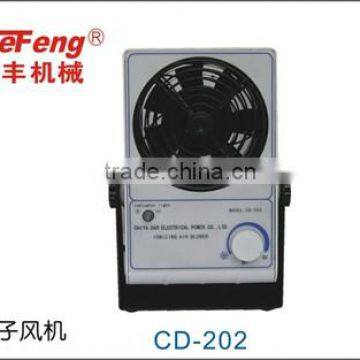 SHENZHEN Static Eliminate Blower Professional ManufacturerUS$ 100 - 120MOQ: 1 SetPlace of Origin: Guangdong, ChinaBrand Name: hefengModel Number: CD-202Voltage: 110V/60Hz or 220V/50HzShenzhen Hefengjiada Technology Co., Ltd.5 Yrs
SHENZHEN Static Eliminate Blower Professional ManufacturerUS$ 100 - 120MOQ: 1 SetPlace of Origin: Guangdong, ChinaBrand Name: hefengModel Number: CD-202Voltage: 110V/60Hz or 220V/50HzShenzhen Hefengjiada Technology Co., Ltd.5 Yrs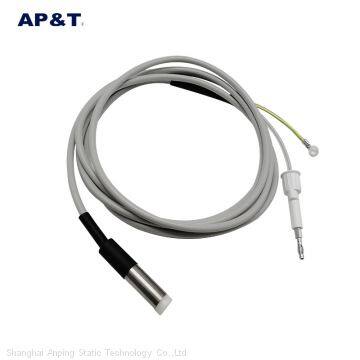 Static Elimination Device AP-AZ5203 Anti-shock Ion PenNegotiableMOQ: 1 PieceBrand Name: AP&TPlace of Origin: ChinaModel Number: AP-AZ5203Shanghai Anping Static Technology Co.,Ltd
Static Elimination Device AP-AZ5203 Anti-shock Ion PenNegotiableMOQ: 1 PieceBrand Name: AP&TPlace of Origin: ChinaModel Number: AP-AZ5203Shanghai Anping Static Technology Co.,Ltd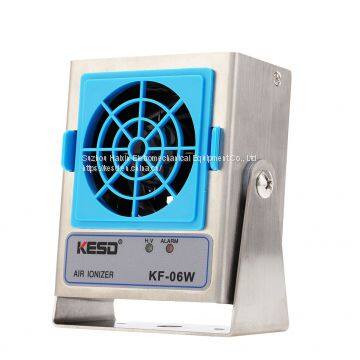 KF-06W High Frequency Ion Fan Anti Static EliminatorUS$ 1 - 2MOQ: 1 PieceBrand Name: KESDPlace of Origin: ChinaModel Number: KF-06WSuzhou Haixin Eletromechanical Equipment Co., Ltd
KF-06W High Frequency Ion Fan Anti Static EliminatorUS$ 1 - 2MOQ: 1 PieceBrand Name: KESDPlace of Origin: ChinaModel Number: KF-06WSuzhou Haixin Eletromechanical Equipment Co., Ltd Space Static Elimination KU-50US$ 50 - 100MOQ: 1 PieceBrand Name: KESDPlace of Origin: ChinaModel Number: KU-50Suzhou Haixin Electromechanical Industrial Equipment Co., Ltd
Space Static Elimination KU-50US$ 50 - 100MOQ: 1 PieceBrand Name: KESDPlace of Origin: ChinaModel Number: KU-50Suzhou Haixin Electromechanical Industrial Equipment Co., Ltd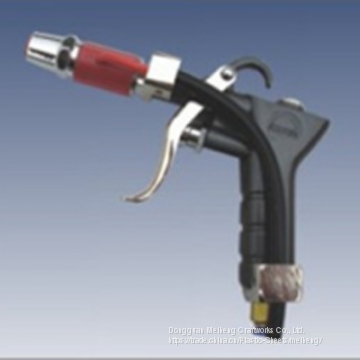 Ionizing Air Gun, Static Elimination Gun Maker & Producer, ESD Ionizing Air Gun Factory & ManufactuUS$ 50 - 150MOQ: 2 PiecesBrand Name: KXYPlace of Origin: ChinaModel Number: Ionizing Air GunDongguan Meiheng Craftworks Co., Ltd.
Ionizing Air Gun, Static Elimination Gun Maker & Producer, ESD Ionizing Air Gun Factory & ManufactuUS$ 50 - 150MOQ: 2 PiecesBrand Name: KXYPlace of Origin: ChinaModel Number: Ionizing Air GunDongguan Meiheng Craftworks Co., Ltd.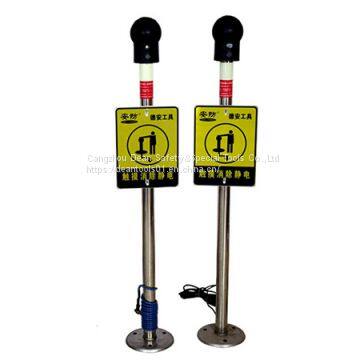 Vertical Rod Type Floor-type Electrostatic Discharge Tester / Electrostatic Discharge Device for Human BodyUS$ 20 - 93MOQ: 1 PieceBrand Name: DEAN TOOLSPlace of Origin: ChinaModel Number: 2141Power: ElectronicCangzhou Dean Safety&Special Tools Co.,Ltd
Vertical Rod Type Floor-type Electrostatic Discharge Tester / Electrostatic Discharge Device for Human BodyUS$ 20 - 93MOQ: 1 PieceBrand Name: DEAN TOOLSPlace of Origin: ChinaModel Number: 2141Power: ElectronicCangzhou Dean Safety&Special Tools Co.,Ltd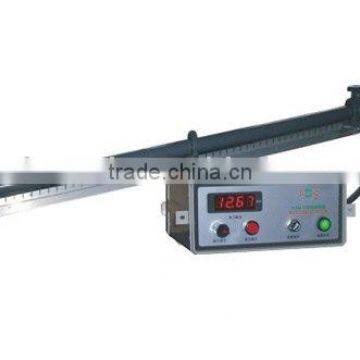 TJD Static Eliminate Equipment(Static Eliminator)US$ 100 - 200MOQ: 1 SetPlace of Origin: Zhejiang, ChinaBrand Name: TENGLONGModel Number: TJDTenglong Electronics Meter Co., Ltd.
TJD Static Eliminate Equipment(Static Eliminator)US$ 100 - 200MOQ: 1 SetPlace of Origin: Zhejiang, ChinaBrand Name: TENGLONGModel Number: TJDTenglong Electronics Meter Co., Ltd. Printing Static EliminatorUS$ 160 - 400MOQ: 1 PieceBrand Name: WingtaiModel Number: WT-A10Shantou Wingtai Packing Equipment Co., Ltd.
Printing Static EliminatorUS$ 160 - 400MOQ: 1 PieceBrand Name: WingtaiModel Number: WT-A10Shantou Wingtai Packing Equipment Co., Ltd. Printing Static Eliminate BrushUS$ 22 - 25MOQ: 1 MeterPlace of Origin: Guangdong, ChinaBrand Name: RONGTAIModel Number: TY-55CType: Industrial BrushShantou Rongtai Packing Equipment Co., Ltd.
Printing Static Eliminate BrushUS$ 22 - 25MOQ: 1 MeterPlace of Origin: Guangdong, ChinaBrand Name: RONGTAIModel Number: TY-55CType: Industrial BrushShantou Rongtai Packing Equipment Co., Ltd. AC Static EliminatorNegotiableMOQ: 1 SetPlace of Origin: ChinaShanghai Anping Static Science & Technology Co., Ltd.
AC Static EliminatorNegotiableMOQ: 1 SetPlace of Origin: ChinaShanghai Anping Static Science & Technology Co., Ltd.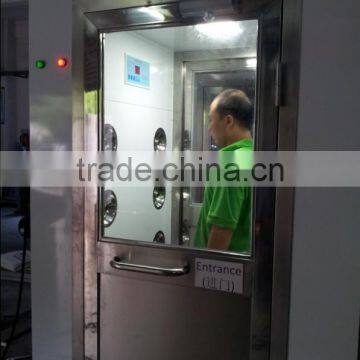 Static Eliminator Air ShowerUS$ 1,492 - 3,000MOQ: 1 PieceCondition: NewPlace of Origin: Guangdong, ChinaBrand Name: JowellModel Number: AS-1600Dongguan Zhuowei Purification Technology Co., Ltd.
Static Eliminator Air ShowerUS$ 1,492 - 3,000MOQ: 1 PieceCondition: NewPlace of Origin: Guangdong, ChinaBrand Name: JowellModel Number: AS-1600Dongguan Zhuowei Purification Technology Co., Ltd.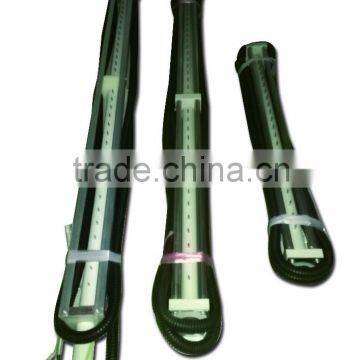 Static Eliminator for Warping MachineUS$ 500 - 1,500MOQ: 1 SetPlace of Origin: Jiangsu, ChinaBrand Name: C.H warpingModel Number: 220V,OUTPUT 10KV35MAUse: Other, Warping machineChangzhou Changhan Machinery Co., Ltd.
Static Eliminator for Warping MachineUS$ 500 - 1,500MOQ: 1 SetPlace of Origin: Jiangsu, ChinaBrand Name: C.H warpingModel Number: 220V,OUTPUT 10KV35MAUse: Other, Warping machineChangzhou Changhan Machinery Co., Ltd.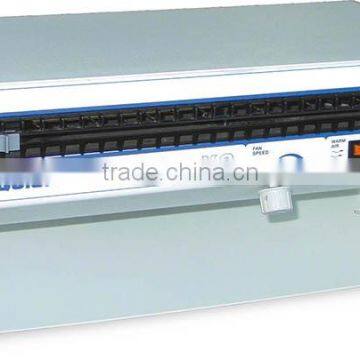 QUICK 441B Static EliminatorUS$ 1 - 1,000MOQ: 1 PiecePlace of Origin: Jiangsu, ChinaBrand Name: QUICKModel Number: QUICK 441BChangzhou QUICK Soldering Co., Ltd.
QUICK 441B Static EliminatorUS$ 1 - 1,000MOQ: 1 PiecePlace of Origin: Jiangsu, ChinaBrand Name: QUICKModel Number: QUICK 441BChangzhou QUICK Soldering Co., Ltd.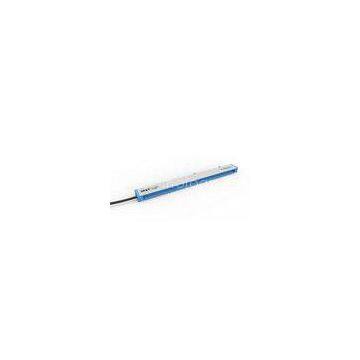 High Voltage Non Shock Static Eliminator Bar , Ionizer Static EliminatorNegotiableMOQ: 1 PieceBrand Name: AP&TPlace of Origin: ChinaModel Number: AP-AC5002Anping Static Technology Co.,Ltd
High Voltage Non Shock Static Eliminator Bar , Ionizer Static EliminatorNegotiableMOQ: 1 PieceBrand Name: AP&TPlace of Origin: ChinaModel Number: AP-AC5002Anping Static Technology Co.,Ltd Ionizing Static Eliminator Bar , Printing Machine Static Elimination EquipmentNegotiableMOQ: 1 PieceBrand Name: AP&TPlace of Origin: ChinaModel Number: AP-AC5001Shanghai Anping Static Technology Co.,Ltd
Ionizing Static Eliminator Bar , Printing Machine Static Elimination EquipmentNegotiableMOQ: 1 PieceBrand Name: AP&TPlace of Origin: ChinaModel Number: AP-AC5001Shanghai Anping Static Technology Co.,Ltd Extra Long Wire Static EliminatorUS$ 60 - 80MOQ: 1 PieceBrand Name: ELESTECHModel Number: ES41202Shenzhen Eles Technology Co., Ltd.
Extra Long Wire Static EliminatorUS$ 60 - 80MOQ: 1 PieceBrand Name: ELESTECHModel Number: ES41202Shenzhen Eles Technology Co., Ltd. Air Ionizer Nozzle for Static EliminateNegotiableMOQ: 1000 PiecesModel Number: E0203Shenzhen Maxsharer Technology Co., Ltd.
Air Ionizer Nozzle for Static EliminateNegotiableMOQ: 1000 PiecesModel Number: E0203Shenzhen Maxsharer Technology Co., Ltd.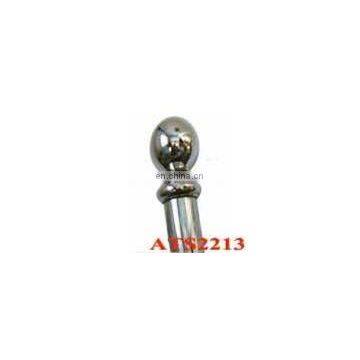 Touch Style Static Elimination BallNegotiableMOQ: 10 SetsPlace of Origin: Guangdong, ChinaBrand Name: ATSModel Number: ATS-2213Shenzhen Aidacom Electronics Co., Ltd.
Touch Style Static Elimination BallNegotiableMOQ: 10 SetsPlace of Origin: Guangdong, ChinaBrand Name: ATSModel Number: ATS-2213Shenzhen Aidacom Electronics Co., Ltd.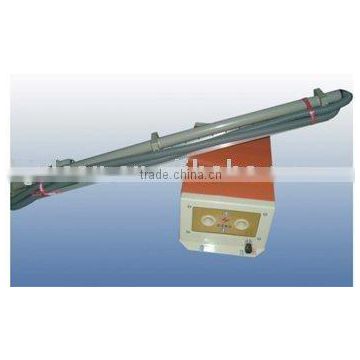 Industrial Static Elimination Ion BarNegotiableMOQ: 1 SetBrand Name: HJclean TECHSuzhou Industrial Park HJ Clean Tech. Co., Ltd.
Industrial Static Elimination Ion BarNegotiableMOQ: 1 SetBrand Name: HJclean TECHSuzhou Industrial Park HJ Clean Tech. Co., Ltd. Personal Static Eliminator With Alarm ESDUS$ 280 - 350MOQ: 20 SetsPlace of Origin: Shandong, ChinaBrand Name: anysafeModel Number: PS-AQingdao Alptec Safety Equipment Co., Ltd.
Personal Static Eliminator With Alarm ESDUS$ 280 - 350MOQ: 20 SetsPlace of Origin: Shandong, ChinaBrand Name: anysafeModel Number: PS-AQingdao Alptec Safety Equipment Co., Ltd.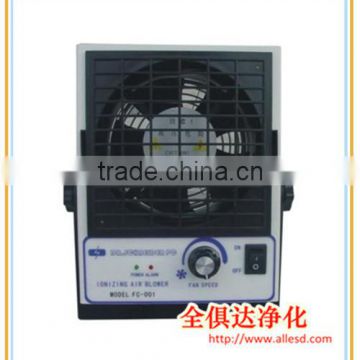 Static Elimination Static Control Industrial Air BlowerUS$ 40 - 60MOQ: 1 SetPlace of Origin: Jiangsu, ChinaBrand Name: allesdModel Number: SL-001Suzhou Quanjuda Purification Technology Co., Ltd.
Static Elimination Static Control Industrial Air BlowerUS$ 40 - 60MOQ: 1 SetPlace of Origin: Jiangsu, ChinaBrand Name: allesdModel Number: SL-001Suzhou Quanjuda Purification Technology Co., Ltd.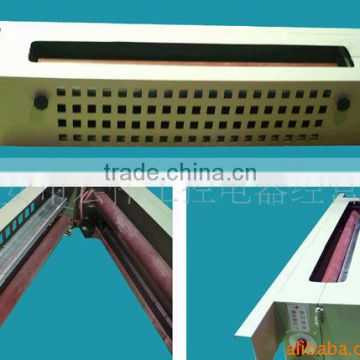 Corona Treater for Film Surface Static EliminatingUS$ 600 - 1,500MOQ: 1 SetCondition: NewProduct Type: Pe FilmPlace of Origin: Zhejiang, ChinaBrand Name: MINGLIRuian Dongchen Packaging Machinery Co., Ltd.
Corona Treater for Film Surface Static EliminatingUS$ 600 - 1,500MOQ: 1 SetCondition: NewProduct Type: Pe FilmPlace of Origin: Zhejiang, ChinaBrand Name: MINGLIRuian Dongchen Packaging Machinery Co., Ltd. AP-AC5702 Printing Machinery Static Eliminator BarUS$ 50 - 80MOQ: 1 PiecePlace of Origin: Shanghai, ChinaBrand Name: AP&TModel Number: AP-AC5702Shanghai Anping Static Technology Co., Ltd.
AP-AC5702 Printing Machinery Static Eliminator BarUS$ 50 - 80MOQ: 1 PiecePlace of Origin: Shanghai, ChinaBrand Name: AP&TModel Number: AP-AC5702Shanghai Anping Static Technology Co., Ltd.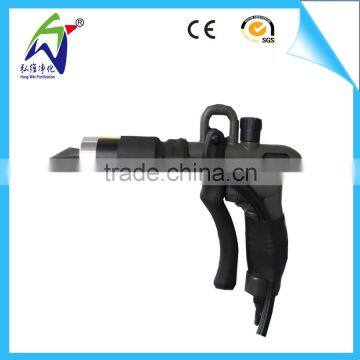 Hign Quality Static Elimination Ionizing Air GunUS$ 50 - 70MOQ: 10 SetsPlace of Origin: Guangdong, ChinaBrand Name: HWModel Number: SL004Type: Other, Ion air gunDongguan Hongwei Purification Technology Co., Ltd.
Hign Quality Static Elimination Ionizing Air GunUS$ 50 - 70MOQ: 10 SetsPlace of Origin: Guangdong, ChinaBrand Name: HWModel Number: SL004Type: Other, Ion air gunDongguan Hongwei Purification Technology Co., Ltd.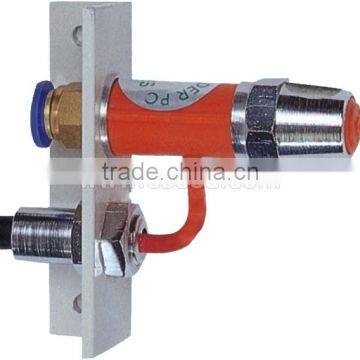 SL-005 Static Elimination Ionizing Air NozzleUS$ 19.50 - 19.50MOQ: 1 PiecePlace of Origin: Guangdong, ChinaBrand Name: CSKJCLEANModel Number: CS6683800Dongguan Chuangshun Anti-Static Technology Co., Ltd.
SL-005 Static Elimination Ionizing Air NozzleUS$ 19.50 - 19.50MOQ: 1 PiecePlace of Origin: Guangdong, ChinaBrand Name: CSKJCLEANModel Number: CS6683800Dongguan Chuangshun Anti-Static Technology Co., Ltd. Procurement Specialist negotiating terms for SHANGHAI static eliminate blower with best perforance2025-10-23 17:54:40
Procurement Specialist negotiating terms for SHANGHAI static eliminate blower with best perforance2025-10-23 17:54:40 Import Coordinator is sourcing Ne30/2plies 20% stainless steel blend with 80% micro fiber polyester staple fiber for high strength tape/filter bags-XT117792025-10-27 09:59:21
Import Coordinator is sourcing Ne30/2plies 20% stainless steel blend with 80% micro fiber polyester staple fiber for high strength tape/filter bags-XT117792025-10-27 09:59:21 Import Coordinator negotiating terms for SJL-100 Aluminum Sheave Grounding Pulley Block to eliminate induced static electricity2025-10-23 12:32:26
Import Coordinator negotiating terms for SJL-100 Aluminum Sheave Grounding Pulley Block to eliminate induced static electricity2025-10-23 12:32:26 Purchaser placed an order for Delete Electrostatic Releaser Elimination Of Static Electricity Electrostatic Ball2025-10-26 10:22:32
Purchaser placed an order for Delete Electrostatic Releaser Elimination Of Static Electricity Electrostatic Ball2025-10-26 10:22:32 Verified Buyer requested specs for New design static eliminate blower with cheaper price2025-10-26 21:42:46
Verified Buyer requested specs for New design static eliminate blower with cheaper price2025-10-26 21:42:46 Importer submitted an RFQ for Drug Inspecting Static Electricity Eliminating Machine2025-10-23 14:08:00
Importer submitted an RFQ for Drug Inspecting Static Electricity Eliminating Machine2025-10-23 14:08:00 Lead Purchaser inquired about Anti-Static Key Chains Eliminator Auto Demic Electrostatic Canceler Car Remover Decoration Ornament Accessories2025-10-24 11:24:10
Lead Purchaser inquired about Anti-Static Key Chains Eliminator Auto Demic Electrostatic Canceler Car Remover Decoration Ornament Accessories2025-10-24 11:24:10 Procurement Lead submitted an RFQ for 100% Premium Organic Felt Wool Dryer Balls - SOLID - No Fillers like Naturally Soften Laundry ~ Eliminate Static2025-10-24 17:51:57
Procurement Lead submitted an RFQ for 100% Premium Organic Felt Wool Dryer Balls - SOLID - No Fillers like Naturally Soften Laundry ~ Eliminate Static2025-10-24 17:51:57 Business Owner placed an order for Digital static eliminate blower with best perforance2025-10-27 08:38:27
Business Owner placed an order for Digital static eliminate blower with best perforance2025-10-27 08:38:27 Purchaser requested a quote for High quality static eliminate blower with best perforance21 hours ago
Purchaser requested a quote for High quality static eliminate blower with best perforance21 hours ago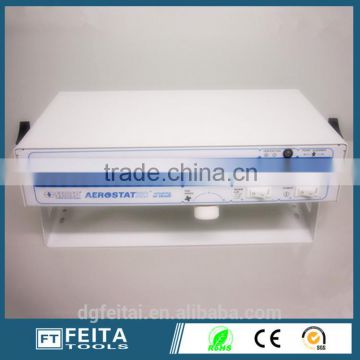 Ionizer Blower/static Elimination Blower/anti Static Air BlowerUS$ 85 - 135MOQ: 1 SetElectric Current Type: ACMounting: Ceiling FanBlade Material: PlasticPlace of Origin: Guangdong, ChinaDongguan Feita Electronics Co., Limited
Ionizer Blower/static Elimination Blower/anti Static Air BlowerUS$ 85 - 135MOQ: 1 SetElectric Current Type: ACMounting: Ceiling FanBlade Material: PlasticPlace of Origin: Guangdong, ChinaDongguan Feita Electronics Co., Limited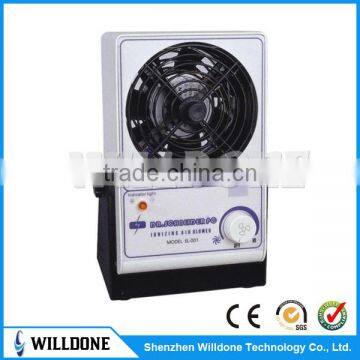 SL-001 Static Eliminator Small Air Ionizer BlowerNegotiableMOQ: 1 PiecePlace of Origin: Guangdong, ChinaBrand Name: Dr.SchneiderModel Number: SL-001Application: Air BlowerShenzhen Willdone Technology Co., Ltd.
SL-001 Static Eliminator Small Air Ionizer BlowerNegotiableMOQ: 1 PiecePlace of Origin: Guangdong, ChinaBrand Name: Dr.SchneiderModel Number: SL-001Application: Air BlowerShenzhen Willdone Technology Co., Ltd.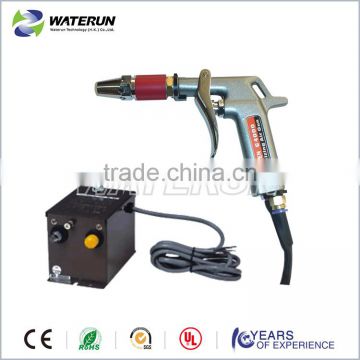 Waterun G4000 ESD Ionizing Air Gun Static Elimination GunUS$ 48 - 128MOQ: 1 PiecePlace of Origin: Guangdong, ChinaBrand Name: WaterunModel Number: G4000Type: Other, G4000 ESD Ionizing Air GunShenzhen Waterun Technology Co., Ltd.
Waterun G4000 ESD Ionizing Air Gun Static Elimination GunUS$ 48 - 128MOQ: 1 PiecePlace of Origin: Guangdong, ChinaBrand Name: WaterunModel Number: G4000Type: Other, G4000 ESD Ionizing Air GunShenzhen Waterun Technology Co., Ltd. Corona Treater Manufacturer for Film Roll or Sheet Surface Static EliminatingNegotiableMOQ: 1 SetPlace of Origin: Zhejiang, ChinaBrand Name: BONADAModel Number: 2001After-sales Service Provided: Engineers available to service machinery overseasRuian Bonada I/E Industrial Co., Ltd.
Corona Treater Manufacturer for Film Roll or Sheet Surface Static EliminatingNegotiableMOQ: 1 SetPlace of Origin: Zhejiang, ChinaBrand Name: BONADAModel Number: 2001After-sales Service Provided: Engineers available to service machinery overseasRuian Bonada I/E Industrial Co., Ltd.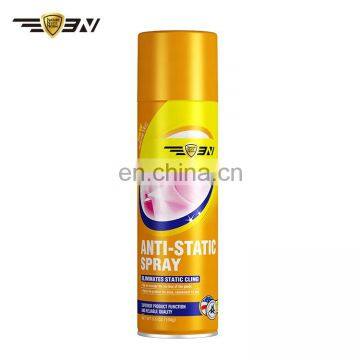 3N Aerosol Static Removing Spray, Canned Static Eliminator Spray, Static Electricity Remover Spray for Home and FactoryUS$ 0.45 - 0.75MOQ: 20000 PiecesBrand Name: 3NPlace of Origin: Guangdong, ChinaModel Number: N829Shape: SprayHubei Daly LPG Cylinder Manufacturer Co., Ltd.
3N Aerosol Static Removing Spray, Canned Static Eliminator Spray, Static Electricity Remover Spray for Home and FactoryUS$ 0.45 - 0.75MOQ: 20000 PiecesBrand Name: 3NPlace of Origin: Guangdong, ChinaModel Number: N829Shape: SprayHubei Daly LPG Cylinder Manufacturer Co., Ltd.

